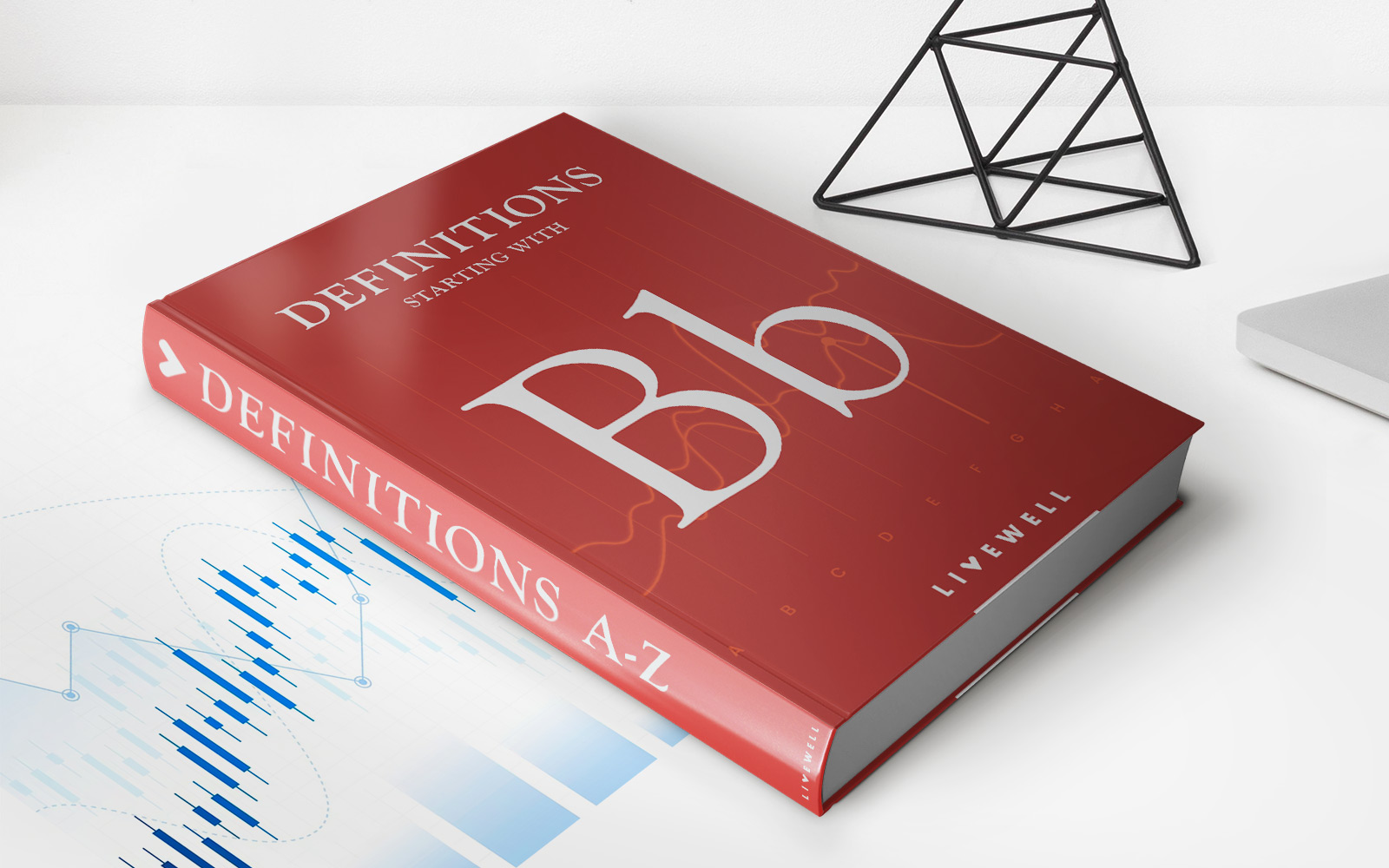

Finance
What Is A Temporary Account In Accounting
Published: October 13, 2023
Discover what a temporary account in accounting is and how it impacts your finances. Gain a deeper understanding of finance with this essential guide.
(Many of the links in this article redirect to a specific reviewed product. Your purchase of these products through affiliate links helps to generate commission for LiveWell, at no extra cost. Learn more)
Table of Contents
Introduction
In the world of accounting, a temporary account plays a crucial role in tracking the financial transactions of a business or organization. Also known as nominal accounts or income statement accounts, temporary accounts are created to record revenues, expenses, gains, and losses for a specific accounting period.
Understanding temporary accounts is essential for maintaining accurate financial records and preparing financial statements. Whether you’re a business owner, an aspiring accountant, or simply curious about the inner workings of finance, this article will provide a comprehensive overview of what temporary accounts are, their purpose, and how they are utilized in the accounting process.
Throughout this article, we will delve into the definition of temporary accounts, explore the different types of temporary accounts, examine the importance of temporary accounts during the accounting period, and discuss the closing process for these accounts. By the end, you’ll have a clear understanding of how temporary accounts contribute to the financial health of an organization and the overall reporting of its financial performance.
So, let’s dive into the world of temporary accounts in accounting and unravel the key concepts and principles behind their usage.
Definition of Temporary Account
A temporary account, also known as a nominal account or an income statement account, refers to a type of account in accounting that is used to track revenues, expenses, gains, and losses for a specific accounting period. Unlike permanent accounts, which are continuously maintained and carry over from one accounting period to another, temporary accounts are reset to zero at the end of each accounting period.
The purpose of temporary accounts is to capture the financial activities that occur within a specific timeframe, typically a fiscal year or a quarter. These accounts are vital in measuring the profitability and financial performance of a business during a given period.
In essence, temporary accounts serve as a temporary repository for the financial results generated by a business’s day-to-day operations. They provide a detailed breakdown of the company’s revenues, expenses, gains, and losses, enabling stakeholders to assess the company’s financial health and make informed decisions.
Temporary accounts are categorized into several types, including revenue accounts, expense accounts, and gain and loss accounts. Each of these accounts serves a specific purpose in tracking different aspects of a company’s financial transactions.
It’s important to note that temporary accounts have a limited lifespan and are closed out at the end of the accounting period to prepare for the next period’s financial reporting. This is achieved through the process of closing entries, which involve transferring the balances of temporary accounts to a permanent equity account called Retained Earnings or an Income Summary account.
By resetting these accounts to zero at the end of each accounting period, the company starts with a clean slate for the next accounting period, ensuring accurate and up-to-date financial reporting.
Now that we have a clear understanding of what temporary accounts are let’s explore the purpose of these accounts in more detail.
Purpose of Temporary Accounts
The purpose of temporary accounts in accounting is to accurately measure the financial performance of a business or organization for a specific accounting period. These accounts play a crucial role in providing a detailed breakdown of revenues, expenses, gains, and losses incurred during the period, allowing for analysis and assessment of the company’s financial health.
Temporary accounts serve several purposes, including:
- Revenue Tracking: Revenue accounts, a type of temporary account, are used to record the income generated by a business. This includes sales revenue from products or services, interest income, rental income, and any other sources of income. By tracking revenues, businesses can assess their sales performance, identify the most profitable products or services, and make informed decisions to drive growth.
- Expense Monitoring: Expense accounts, another type of temporary account, are utilized to track and categorize the costs incurred by a business to operate. This includes expenses such as salaries, rent, utilities, marketing expenses, and any other costs necessary for running the business. By monitoring expenses, businesses can identify areas of overspending, implement cost-saving measures, and evaluate the overall efficiency of their operations.
- Gain and Loss Recognition: Temporary accounts also include gain and loss accounts, which are used to record any non-operational gains or losses incurred by a business. These can include gains or losses from the sale of assets, foreign exchange transactions, or other extraordinary events. By tracking these gains and losses separately, businesses can assess the impact of non-operational activities on their financial performance.
- Financial Reporting: Temporary accounts play a crucial role in the preparation of financial statements, such as the income statement and statement of retained earnings. These statements provide a summary of the company’s financial performance and are used by stakeholders such as investors, lenders, and management to evaluate the company’s profitability and financial health.
- Periodic Assessment: Temporary accounts allow businesses to evaluate their financial performance on a periodic basis. By resetting these accounts to zero at the end of each accounting period, businesses can assess their performance independently for each period, enabling comparison and analysis.
Overall, the purpose of temporary accounts is to provide a clear and accurate representation of a company’s financial performance for a specific accounting period. They enable businesses to track revenues, expenses, gains, and losses, analyze their financial health, and make informed decisions based on the results.
Now, let’s explore the different types of temporary accounts in more detail.
Types of Temporary Accounts
Temporary accounts in accounting can be categorized into several types, each serving a unique purpose in tracking specific financial transactions. The three main types of temporary accounts are revenue accounts, expense accounts, and gain and loss accounts.
- Revenue Accounts: Revenue accounts record the income generated by a business from its primary operations. This includes sales revenue, service revenue, interest income, rental income, and any other sources of revenue. Revenue accounts track the inflow of money into the business and are crucial in assessing the company’s sales performance and profitability. Examples of revenue accounts include Sales Revenue, Service Revenue, Interest Income, and Rental Income.
- Expense Accounts: Expense accounts track the costs incurred by a business to operate. These accounts capture expenses such as salaries, rent, utilities, advertising, and other costs necessary for running the business. Expense accounts help businesses monitor and manage their spending, identify cost-saving opportunities, and evaluate the efficiency of their operations. Examples of expense accounts include Salaries Expense, Rent Expense, Utilities Expense, and Advertising Expense.
- Gain and Loss Accounts: Gain and loss accounts are used to record any non-operational gains or losses incurred by a business. These accounts capture gains or losses from the sale of assets, foreign exchange transactions, or other extraordinary events outside of the company’s regular operations. Gain and loss accounts provide insight into the financial impact of non-operational activities and are important for assessing overall financial performance. Examples of gain and loss accounts include Gain on Sale of Assets, Loss on Foreign Exchange, and Extraordinary Losses.
It is worth noting that while revenue accounts increase equity and are recorded as credits, expense accounts decrease equity and are recorded as debits. Gain accounts increase equity and are recorded as credits, while loss accounts decrease equity and are recorded as debits.
By categorizing financial transactions into these types of temporary accounts, businesses can better understand and analyze their financial performance. These accounts provide a clear and organized structure for tracking revenues, expenses, gains, and losses, enabling businesses to make informed decisions based on their financial data.
Now that we have explored the different types of temporary accounts, let’s move on to understanding how these accounts are affected by the accounting period.
Revenue Accounts
Revenue accounts are a type of temporary account in accounting that record the income generated by a business through its primary operations. These accounts track the inflow of money into the company and are essential in assessing a company’s sales performance and profitability.
Revenue accounts capture various sources of income, including sales revenue from products or services, interest income, rental income, royalties, and any other revenue streams directly related to the business’s operations. The specific revenue accounts used by a business will depend on its industry and the nature of its operations.
When a sale is made or a service is rendered, the revenue generated is recorded in the appropriate revenue account. For example, a retail company would have a Sales Revenue account where all income from sales of its products is recorded. Similarly, a consulting firm would have a Service Revenue account to track income from consulting services provided to clients.
Revenue accounts are credited to increase equity in the accounting equation as revenue represents an increase in the company’s assets or decreases in its liabilities. This means that revenues have a positive impact on a company’s financial position and contribute to its overall profitability.
Monitoring revenue accounts is crucial in evaluating a business’s sales performance over a specific period, such as a fiscal year, quarter, or month. By analyzing revenue trends, businesses can identify their most profitable products, services, or customer segments. This information helps in making informed decisions about resource allocation, marketing strategies, and expanding business operations.
Examples of revenue accounts include:
- Sales Revenue: This account records the revenue generated from the sale of products.
- Service Revenue: This account tracks income earned from providing services to clients.
- Interest Income: This account captures the revenue earned from interest on loans, investments, or bank deposits.
- Rental Income: This account records income received from renting out properties or assets.
- Royalty Income: This account tracks income earned from the use of copyrighted or patented materials.
Revenue accounts play a vital role in financial reporting, as they provide a clear picture of a company’s sales performance and its ability to generate income. These accounts are essential for calculating key metrics like gross profit, net profit, and profit margins, enabling businesses to evaluate their financial success and make informed strategic decisions.
Now that we have explored revenue accounts, let’s move on to understanding the other types of temporary accounts in more detail.
Expense Accounts
Expense accounts are a type of temporary account in accounting that track the costs incurred by a business in its day-to-day operations. These accounts are essential for monitoring and managing expenses, evaluating the efficiency of business operations, and determining the overall financial health of the company.
Expense accounts capture various costs that a business may encounter, including salaries and wages, rent, utilities, marketing expenses, office supplies, and other necessary expenditures. The specific expense accounts used by a business will depend on its industry, the nature of its operations, and the types of expenses it incurs.
When an expense is incurred, it is recorded in the appropriate expense account. For example, a manufacturing company would have accounts such as Manufacturing Costs, Raw Materials, and Factory Overhead to track expenses related to production. A service-based business may have accounts such as Salaries Expense, Rent Expense, and Marketing Expense to capture costs specific to its operations.
Expense accounts are debited to decrease equity in the accounting equation, as expenses represent a decrease in the company’s assets or an increase in its liabilities. This means that expenses have a negative impact on a company’s financial position and affect its profitability.
Monitoring expense accounts is crucial in managing costs and evaluating the financial efficiency of a business. By analyzing expense trends, businesses can identify areas of overspending, implement cost-saving measures, and enhance profitability. Expense accounts also assist in budgeting and forecasting future expenses, helping businesses make informed financial decisions.
Examples of expense accounts include:
- Salaries Expense: This account records the wages and salaries paid to employees.
- Rent Expense: This account tracks the cost of renting premises or facilities.
- Utilities Expense: This account captures the costs of electricity, water, gas, and other utilities.
- Marketing Expense: This account records the costs associated with marketing and advertising activities.
- Office Supplies Expense: This account tracks the costs of purchasing office supplies and stationery.
Expense accounts are crucial for accurate financial reporting and provide insights into a business’s operating costs and cost structure. These accounts help in calculating key financial ratios, such as the gross margin ratio and the operating expense ratio, which can be used to assess business efficiency and profitability.
Now that we have explored expense accounts, let’s move on to understanding the other types of temporary accounts in more detail.
Gain and Loss Accounts
Gain and loss accounts are a type of temporary account in accounting that track non-operational gains and losses incurred by a business. These accounts are used to record and analyze financial events that are outside of the company’s regular operations and are vital in evaluating the overall financial performance and stability of the business.
Gains and losses can arise from various sources, including the sale of assets, foreign exchange transactions, write-offs, or other extraordinary events. These types of transactions are recorded in the appropriate gain or loss account, providing visibility into the financial impact of these non-operational activities.
When a gain is realized, it is recorded as a credit in the appropriate gain account. Conversely, when a loss is incurred, it is recorded as a debit in the corresponding loss account. These accounts are temporary in nature, as gains and losses are specific to a particular accounting period and are not part of the company’s ongoing operations.
Gain and loss accounts are essential for accurate financial reporting and help stakeholders understand the financial performance of a business beyond its regular operations. By separating gains and losses from operational revenues and expenses, businesses can assess their financial stability and evaluate the impact of extraordinary events on their overall profitability.
Examples of gain and loss accounts include:
- Gain on Sale of Assets: This account records the gain realized from the sale of fixed assets, such as property, equipment, or investments.
- Loss on Foreign Exchange: This account tracks losses incurred due to fluctuations in exchange rates when conducting international transactions.
- Extraordinary Losses: This account captures unexpected losses resulting from events such as disasters, lawsuits, or other significant and unusual circumstances.
- Write-off Losses: This account records losses incurred from the write-off of uncollectible debts or obsolete inventory.
Gain and loss accounts provide valuable insights into the financial health of a business, helping stakeholders assess the impact of non-operational events and transactions. These accounts enable businesses to analyze their overall financial performance, make strategic decisions, and assess the potential risks and challenges they might face.
Now that we have explored gain and loss accounts, let’s move on to understanding how temporary accounts are affected by the accounting period.
Examples of Temporary Accounts
Temporary accounts are a vital component of the accounting process, allowing businesses to accurately track and report their financial transactions for a specific accounting period. These accounts capture revenues, expenses, gains, and losses incurred during the period, providing insights into a company’s financial performance. Let’s explore some examples of temporary accounts:
- Revenue Accounts: These accounts record the income generated by a business through its primary operations. Examples include Sales Revenue, Service Revenue, Interest Income, Rental Income, and Royalty Income.
- Expense Accounts: These accounts track the costs incurred by a business to operate. Examples include Salaries Expense, Rent Expense, Utilities Expense, Marketing Expense, and Office Supplies Expense.
- Gain and Loss Accounts: These accounts record non-operational gains and losses incurred by a business. Examples include Gain on Sale of Assets, Loss on Foreign Exchange, Extraordinary Losses, and Write-off Losses.
Revenue accounts contribute to a company’s overall income and profitability, while expense accounts reflect the costs associated with running the business. Gain and loss accounts, on the other hand, provide insights into non-operational gains and losses, which can impact the company’s financial position.
For instance, if a business sells a piece of equipment for a higher price than its book value, the gain on the sale will be recorded in the Gain on Sale of Assets account. Conversely, if the business experiences a loss due to changes in exchange rates when conducting international transactions, the loss will be recorded in the Loss on Foreign Exchange account.
It’s important to note that the specific temporary accounts used by a business will vary depending on its industry, operations, and the types of financial transactions it engages in. These accounts provide businesses with a systematic way of tracking and reporting their financial activities, facilitating accurate financial statements and analysis.
By properly categorizing and recording financial transactions in temporary accounts, businesses can gain a comprehensive understanding of their revenue streams, expenses, and any extraordinary gains or losses incurred during a specific accounting period. This information is crucial for informed decision-making, evaluating financial performance, and planning for future growth.
Now that we have explored examples of temporary accounts, let’s move on to understand the relationship between temporary accounts and the accounting period.
Accounting Period and Temporary Accounts
The concept of the accounting period is closely tied to the use of temporary accounts in accounting. An accounting period refers to a specific timeframe for which financial transactions are recorded and summarized. It can be a month, a quarter, or a year, depending on the reporting requirements of the business or organization.
Temporary accounts play a crucial role within the accounting period by capturing the financial activities that occur during that time frame. These accounts are used to record revenues, expenses, gains, and losses for the period, providing an accurate reflection of the company’s financial performance during that specific time.
At the end of the accounting period, temporary accounts are closed to ensure that they start with a zero balance in the next period. This is accomplished through the process of closing entries, which involves transferring the balances of temporary accounts to a permanent equity account called Retained Earnings or an Income Summary account.
Closing entries serve two purposes. Firstly, they reset the temporary accounts to zero, allowing for a fresh start in the next accounting period. Secondly, they summarize the financial results of the period and prepare it for presentation in financial statements.
Revenue accounts are closed by debiting them for their credit balances, while expense accounts are closed by crediting them for their debit balances. The difference between the total revenue and total expense is the net income (or net loss). This net income is transferred to the Retained Earnings account or the Income Summary account, depending on the accounting practices of the business.
By closing the temporary accounts, the company separates the financial results of one accounting period from the next. This allows for accurate reporting, analysis, and comparison of financial performance over specific periods.
The closing process also sets the stage for the beginning of the next accounting period. In the new period, temporary accounts will start with a balance of zero, ready to record the transactions and activities of the business for the following period.
Overall, the relationship between the accounting period and temporary accounts is crucial for the accurate and systematic tracking of financial transactions. Temporary accounts provide a way to capture and summarize the financial results of a specific period, while the closing process ensures that these accounts start fresh in the next period.
Now that we understand the relationship between temporary accounts and the accounting period, let’s move on to explore the closing entries for temporary accounts.
Closing Entries for Temporary Accounts
Closing entries are a critical step in the accounting process that involves transferring the balances of temporary accounts to a permanent equity account or an income summary account. This process ensures the accurate reporting of financial results for a specific accounting period and allows for a fresh start in the next period.
The closing entries specifically target revenue accounts, expense accounts, and gain and loss accounts, which are all temporary accounts. The process involves several steps:
- Close Revenue Accounts: Revenue accounts are closed by debiting the individual revenue accounts and crediting the income summary account or retained earnings account. This process transfers the total amount of revenues earned during the accounting period to a permanent equity account.
- Close Expense Accounts: Expense accounts are closed by crediting individual expense accounts and debiting the income summary account or retained earnings account. This process transfers the total amount of expenses incurred during the accounting period to a permanent equity account.
- Close Gain and Loss Accounts: Gain and loss accounts are closed in a similar manner, with gains debited and losses credited. The balances of these accounts are transferred to the income summary account or retained earnings account.
- Calculate Net Income or Net Loss: After closing the revenue, expense, gain, and loss accounts, the difference between the total revenues and total expenses represents the net income (if revenues exceed expenses) or net loss (if expenses exceed revenues). This amount is recorded in the income summary account or directly transferred to the retained earnings account.
- Transfer Balances to Retained Earnings: Finally, the balance of the income summary account, representing the net income or net loss, is transferred to the retained earnings account. This ensures that the cumulative financial results of the business are accurately reflected in the retained earnings account.
By completing the closing process, temporary accounts no longer have a balance, and the company starts the next accounting period with zero balances in these accounts. This provides a clean slate for recording new transactions and accurately tracking the financial performance of the company in the next period.
Closing entries serve multiple purposes. Firstly, they separate the financial results of one accounting period from the next, allowing for accurate reporting and analysis. Secondly, they summarize the financial performance of the business for the period and transfer the results to permanent equity accounts for ongoing record-keeping.
Understanding and executing the closing entries is essential for ensuring the integrity and accuracy of financial statements, as well as complying with generally accepted accounting principles (GAAP). It enables businesses to provide transparent and reliable information to stakeholders, aiding in decision-making and financial analysis.
Now that we have explored the closing entries for temporary accounts, let’s conclude our discussion on temporary accounts in accounting.
Conclusion
Temporary accounts play a vital role in the field of accounting, allowing businesses and organizations to accurately track and report their financial transactions for a specific accounting period. These accounts, which include revenue accounts, expense accounts, and gain and loss accounts, provide a detailed breakdown of the financial activities occurring within a defined timeframe.
The purpose of temporary accounts is to measure the financial performance of a business during a specific period. Revenue accounts record the income generated through primary operations, while expense accounts track the costs incurred to operate the business. Gain and loss accounts capture non-operational gains and losses that impact the financial position of the company.
Temporary accounts are reset to zero at the end of the accounting period through the closing entries process. This ensures a clean slate for the next period and the accurate reporting of financial results. The closing entries involve transferring the balances of temporary accounts to permanent equity accounts, such as retained earnings or income summary accounts.
By categorizing and recording financial transactions in temporary accounts, businesses can gain insights into their revenue streams, expenses, and extraordinary gains or losses. This information enables stakeholders to assess the financial health of the business and make informed decisions.
Understanding temporary accounts and their role in the accounting process is essential for maintaining accurate financial records, preparing reliable financial statements, and evaluating the financial performance of a business. By utilizing these accounts effectively, businesses can make informed decisions, identify areas for improvement, and drive sustainable growth.
In conclusion, temporary accounts provide a structured and systematic approach to track and report financial transactions during a specific accounting period. They contribute to the overall understanding of a business’s financial performance and are instrumental in effective financial management.














